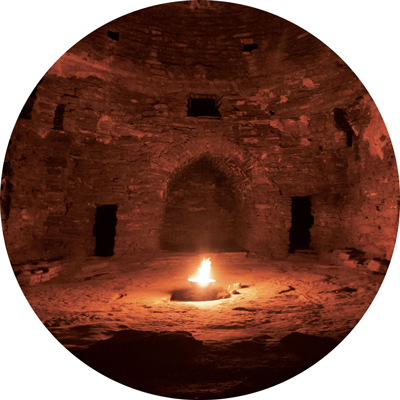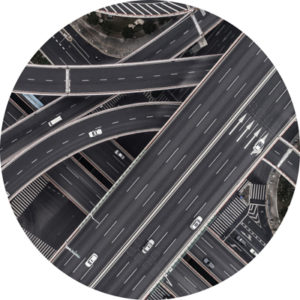No Matter Where You Go, There You Are
By Jeff Finkelstein
In this issue of the Futurist article, I am going to discuss a topic I have covered before but is worth repeating. That topic is why we set a roadmap to follow so we don’t get distracted by all the new technologies that seem to pop up almost daily. Too often we respond like a deer in the headlights, paralyzed by the fear of moving forward.
The Allegory of the Cave Future Technologies
First, let’s think about the way we see technology advancements in a manner similar to the people in Plato’s cave allegory…
 Imagine that there is a group of people underground who live in a cave-like dwelling. There is a long tunnel stretching up to the surface, but the people have lived their entire life in the cave shackled together. They have never been to the surface and can only sit facing a wall, so they can only see what is in front of them. Far behind them is a fire that illuminates things that pass between the fire and them, so they can only see the shadows cast on the wall. All they can see and hear are shadows and echoes cast by things behind them which they cannot directly see.
Imagine that there is a group of people underground who live in a cave-like dwelling. There is a long tunnel stretching up to the surface, but the people have lived their entire life in the cave shackled together. They have never been to the surface and can only sit facing a wall, so they can only see what is in front of them. Far behind them is a fire that illuminates things that pass between the fire and them, so they can only see the shadows cast on the wall. All they can see and hear are shadows and echoes cast by things behind them which they cannot directly see.
Now imagine two people get free and can turn around to see the fire. The flames would initially hurt their eyes because they are not used to looking directly at the light. Plus, as flames flicker, they would not be able to clearly see the things that they knew by their shadows. Still, they have a better understanding of what was casting the shadows, even though they cannot see them clearly.
What if now the pair can walk up the entrance to get up to the surface? The path is steep and difficult to climb, with many hurdles in the way, but after great effort they do reach the open air. What would they encounter? Sun and Moon, changing weather, heat and cold, trees, wind, many things they have never seen before. The glare from the Sun would be blinding, but their eyes would gradually adjust to the bright light. What would they think? They would realize that the shadows they saw in the cave were created by objects that they can now plainly see. It would be very confusing at first, but they can look directly at objects themselves instead of only being able to see the shadows, and they would now know what the shadows were representing.
Eventually they would become acclimated to being on the surface and be able to see things more clearly. They would notice the movement of the Sun and Moon through the sky, would be able to experience the changing of the seasons and how the path of celestial objects impact them. They would become self-aware as they could see their own reflection in the water and know what they look like, plus see the reflection of birds and the Sun and Moon in the water. Most importantly, they would realize that it was the light causing the shadows in the cave. Their newfound wisdom would make them realize how much the people in the cave were wrong about the things they were seeing and hearing in the shadows.
Now imagine the two who were on the land decided to go back into the cave and tell the rest what they experienced. At first when they were back in the cave, they would be temporarily unable to see, at least until their eyes adjusted to the darkness over a long time. Once they did, how would they explain all the amazing things seen on the surface? How would the cave people react to the things the ones with experience on the surface were telling them and the fact that the returned pair could not see underground? Would they think it was worth it to go to the surface? Was the new knowledge worth the trip? If they did go to the uncertainty of the surface, would it be safe like their cave? What would they think of those who went to the surface and are now telling them about it? Would they believe them or possibly think they were leading them to something even worse?
All roads lead to the same destination, eventually…
 A long way to get here, but here we are. Why the allegorical story? Simply because I am a storyteller. I find that sometimes the best way to explain new ideas and concepts is to tell a story.
A long way to get here, but here we are. Why the allegorical story? Simply because I am a storyteller. I find that sometimes the best way to explain new ideas and concepts is to tell a story.
Consider us as the people in the cave. We see a never-ending parade of technologies crossing in front of us. Each one a new and improved (if something is new, we would hope it is improved, if not, why change from what we are doing?) technology that will make things better for our customers, whether internal or external to our companies. The new ideas come at varying rates of speed, sometimes they come quickly and other times more slowly. Yet all we see are shadows on the wall in front of us, like PowerPoint slides projected on a screen.
We have some experience with them based on previous knowledge of the technologies, but they are different in a variety of ways. We have not experienced the new concepts, but we know how our current tech works and have created entire workforce processes around deploying, managing and reporting on them. We don’t know if they will do what is being promised, but we have faith in those telling us what they are capable of doing.
Still, we are chained to our current way of doing business. We want to make things better for our engineering and operations teams. We desire to reduce capex and opex, plus give our customers a better experience. And yet, we are not sure what the proposed future technologies will bring.
Analysis Paralysis, like deer in the headlights
It is our role as technologists to do a thorough and in-depth analysis of the risks related to new technologies. We have all heard the phrase “analysis paralysis” and live it every day. Like the two people to leave the cave, we don’t know specifically what lies ahead with the new technologies we are considering, but we see the potential for them to improve how we do things.
Risk analysis is not a science, it is an art form. And as with any art, the first steps are a leap of faith. Like an artist with a blank canvas or a musician with a blank sheet of music staff, we picture how we would use the new technology and work through the permutations and adjacent impacts to other areas of our business. We cannot know 100%, but work to determine whether the change is worth it. I call that process of making a determination of costs in reusable technologies the non-regrettable spend associated with changes needed to make use of the new ideas.
We need to have a North Star to guide us, something that we are striving to achieve. We may want to reach the 10G vision, reduce facilities and associated costs, or provide higher speeds and lower latencies to our customers. But as with all roads leading to Rome, we know that we will eventually get there, just that we each have a different path to take along the way. In any scenario, we must always remember to enjoy the ride.
As with the people in the cave, we work in collaboration with a variety of different organizations in our companies, vendors, and other service providers in and out of our field. We trust them to help us do the right thing for our customers and our business. Always remember we are not in this journey alone.
We are in a great business working with amazing people, and that can be a lot of fun as we continually learn new ideas while we work to implement them.
 Jeff Finkelstein
Jeff Finkelstein
Executive Director of Advanced Technology
Cox Communications
Jeff.Finkelstein@cox.com
Jeff Finkelstein is the Executive Director of Advanced Technology at Cox Communications in Atlanta, Georgia. He has been a key contributor to the engineering organization at Cox since 2002, and led the team responsible for the deployment of DOCSIS® technologies, from DOCSIS 1.0 to DOCSIS 3.0. He was the initial innovator of advanced technologies including Proactive Network Maintenance, Active Queue Management and DOCSIS 3.1. His current responsibilities include defining the future cable network vision and teaching innovation at Cox. Jeff has over 43 patents issued or pending. His hobbies include Irish Traditional Music and stand-up comedy.
Shutterstock




